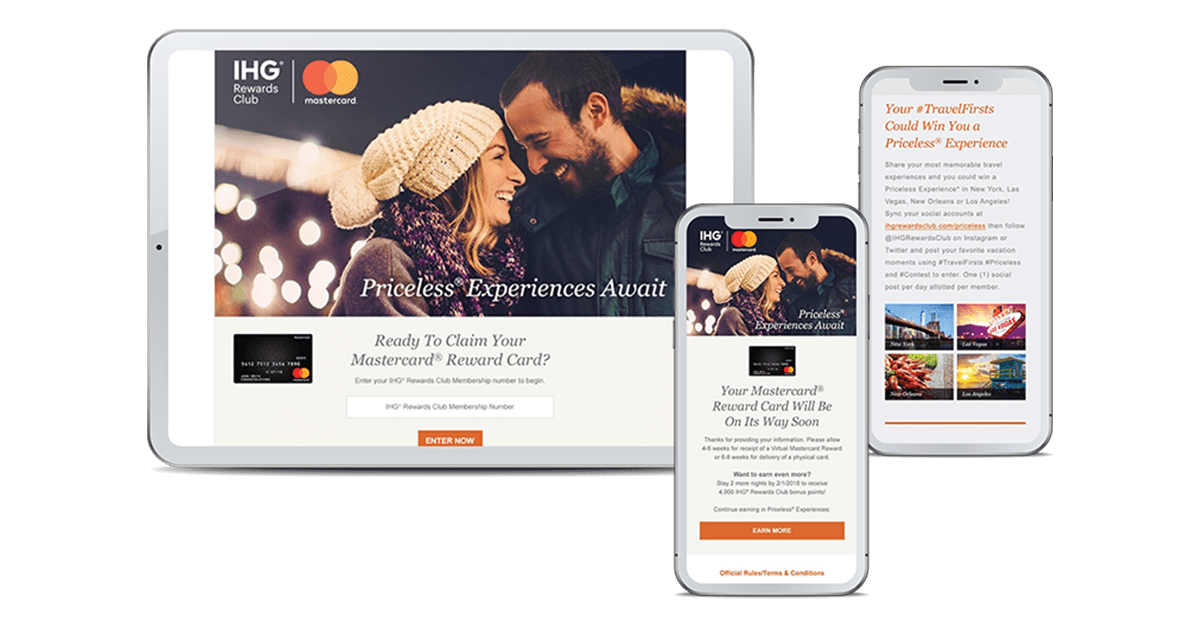Loyalty programs are great tools to motivate your members and increase your sales and customer engagement. Consumers interact with countless brands every day, but only the memorable experiences will capture their attention and make them loyal.
Using loyalty amplifiers elevates engagement and member excitement and keeps them coming back for more. One of these loyalty amplifiers your brand can use is social media incentives.
This article will explain what social media incentives are and how they can help you acquire and retain more customers and make your loyalty program members more valuable.
What Are Social Media Incentives and How Can They Help You and Your Customers?
Social media incentives are creative offers you can use to amplify your loyalty program by stimulating conversation and engagement with your customers.
The more members talk about your brand, the more advocates you will acquire. You can create a buzz on your social media pages and drive traffic to your site by offering members incentives such as discounts, loyalty points and giveaways.
Social media incentives include using semi-unique codes on your social channels that can be entered on your loyalty program site to earn points, providing a heads up for fast finger rewards drops and sharing on social (incented directly or through closed loop referral – incented only when a referred person signs up).
Trivia incentives on social media are also very engaging and fuel friendly competition by encouraging consumers to share their scores or results. You can change out questions on a daily or weekly basis to increase the frequency of participation and include hint functionality where loyalty program members can click to learn more about your brand before answering a question.
When you use social media incentives, your members will show brand affinity, share reviews and testimonials and advocate for you to family and friends.
Stats Show the Importance of Using Social Media Incentives
Our recent research shows that 88% of consumers are likely to join your loyalty program if you offer them an incentive (e.g., the chance to win a prize, receive a discount or get bonus points). And nearly 80% of consumers who belong to a brand’s loyalty program would likely download that brand’s app in exchange for an incentive.
Getting your loyalty program members to provide reviews or testimonials on your social media pages is important.
Consider that 77% of consumers are likely to provide a brand/product testimonial or review if they receive an incentive (e.g., the chance to win a prize, receive a discount or get bonus points). Further, 56% of consumers are likely to share an experience with a brand by tagging the brands they shop with on their social media accounts in exchange for loyalty program points.
And leveraging user-generated content (UGC) on your social media pages puts you right in the middle of the best brand conversations your customers can have. To illustrate the potential power behind UGC, consider this statistic: Ninety-three percent of consumers trust content created by customers more than content created by brands.
When asked what would incentivize them to submit user-generated content (text, videos, images, reviews) on your social media pages, here’s what consumers said:
- 53% said a chance to win a cash prize would be the main reason they would want to submit user-generated content
- Nearly 50% said a coupon code or discount would incentivize them to submit user-generated content
- 43% said they’d be incentivized by a chance to win products from the brand
Brands In Action Using Social Media Incentives
So, let’s look at some examples of brands using social media incentives.
Charlotte Russe gave its social followers a chance to be brand advocates by asking a simple question: Are You a CR IT Girl?
Followers were invited to share their “It Girl” looks on Instagram for a chance to be chosen as one of 50 brand ambassadors. The 50 brand ambassadors were selected based on the quality of content and social influence. They received several rewards like surprise gifts, insider access and CR discount cards.
Alaska Airlines invited customers to share their travel stories on Twitter and Instagram with #IFlyAlaska. The brand selected top content each month and surprised those fans with round-trip vouchers and Shutterfly gift codes, among other rewards.
Red Lobster wanted to raise social awareness for one day called RockARedLobster. Its goal was to drive top-of-mind awareness of Red Lobster by inspiring seafood-loving fans to promote the brand on social media in celebration of National Lobster Day.
It was an invitation-only program that encouraged Red Lobster fans to share photos with #RockARedLobster showing their love of lobster on Instagram and Twitter in exchange for a chance to win prizes instantly.

Also, IHG ran a successful social media incentive campaign called IHG Rewards Club – Priceless Experiences Await, to generate authentic consumer endorsements of the brand via its social media channels.
In partnership with Mastercard, IHG Rewards Club Members shared their respective stories through their eyes and posted photos of their favorite travel memories for a chance to win one of four curated Priceless Experience vacation packages.
Social Media Is a Great Place to Engage Your Loyalty Program Members
With 82% of the U.S. population using at least one social media network, this becomes a critical area for you to market your loyalty program and engage your members.
Create social media incentives that encourage your loyalty program members to take an action, like logging onto your site to receive loyalty points. When you get your members to interact on your social media pages in exchange for an incentive, you acquire more members, increase engagement, retention and brand advocacy.
This article is part of The Ultimate Guide to Loyalty Amplifiers.
If you want to learn more about loyalty amplifiers, check out the previous article in the series, How User-Generated Content Turns Loyalty Program Members into Brand Advocates, or the first article in the series, What Are Loyalty Amplifiers and How Do They Impact Consumer Behavior?